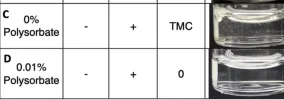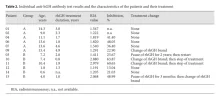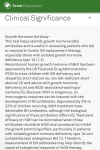So digging into the immunogenic side of things this hypothesis may explain the increased sides for some when injecting SC vs IM.
Incidentally, this is generally applicable to all protein/peptide compounds.
There are two types of immune response to something penetrating the body's barriers.
Innate, ie fast acting, and Adaptive, a learned response to more quickly respond to future infections.
Muscle tissue has a low density of immune cells involved in the "Innate" immune response, while subcutaneous tissue is rich in them.
This makes sense when you consider where an infection is more likely to enter the body.
The powerful innate immune response in subcutaneous tissue is the fast acting SWAT team that responds near instantaneously to anything perceived as an invader. This leads to a chain of events that can trigger inflammation reaching distant parts of the body, a common effect of which is joint pain and stiffness.
Both SC and IM have a similar "Adaptive" immune response. This mechanism picks up samples of the foreign material and transports it to the lymph nodes, where specialized cells "learn" how to identify the offending substance to efficiently destroy it when it's encountered again.
This Adaptive response is how vaccinations work. The reason most vaccines are IM, is to take advantage of the Adaptive while minimizing the unpleasant effects of the Innate response if given subcutaneously.
A few final notes about this.
The potential of this subcutaneous immune induced inflammation traveling to distant parts of the body is made more likely by factors including age, insulin resistance, and body fat.
The Adaptive response, which is the driving force behind immunogenicity and the risk of developing inhibition* of GH is the same regardless of the injection being SC or IM.
Finally, if this is correct, keep in mind that while even though pharma induces immunogenic responses, this is likely much worse with UGL. Aggregates are the biggest culprit in triggering an immune response in all protein therapeutics. UGL is not formulated with anti-aggregation in mind, unlike most pharma brands which go to great lengths to minimize it. Filtration, as close to administration of the shot as possible, is perhaps the most effective way to counter it, controlling PH is the most impotent preventative measure.
To illustrate the difference an anti-aggregation excipient can make, here are two vials of reconstituted peptide that were dropped repeatedly. One has polysorbate as an anti-aggregate excipient, the other doesn't.
View attachment 310805
*For those who haven't seen this before here's an example of GH inhibition detected in patients who exhibited lessening effectiveness of GH treatment, and the test that can determine how much immunity to GH has developed:
View attachment 310807
View attachment 310812




